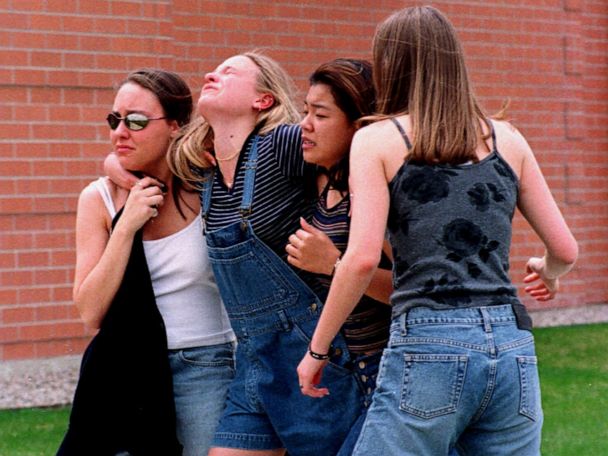April 19, 1954, 70 years ago: Dr. Fredric Wertham publishes his book Seduction of the Innocent. It turns the world of comic books on its head.
Born on March 20, 1895, in Nuremberg, Bavaria, Germany, as Friedrich Ignatz Wertheimer, he anglicized his name to Fredric Wertham in 1927, after moving to America and becoming an American citizen. Subsequently, he married an American sculptor, Florence Hesketh. He had studied at the University of Munich and King's College, London.
He joined the senior staff at New York's Bellevue Hospital, famous (or infamous) for having America's best-known psychiatric ward. In 1946, he opened a low-cost psychiatric clinic in the basement of a church in Harlem, specializing in improving the mental health of black teenagers, and was successful at gaining charitable contributions for it. To this point, he seemed like a good man doing good work.
But that work led him to look into the causes of juvenile delinquency. And in 1954, he published his book, saying he'd found a source. Not rock and roll music, which was then in its infancy. Not movies about young criminals, like the ones starring Marlon Brando and James Dean. Comic books.
He specifically cited "crime comics," which he used to describe not only the popular gangster/murder-oriented titles of the time, but also superhero and horror comics as well. He asserted, based largely on undocumented anecdotes, that reading this material encouraged similar behavior in children. He said that 95 percent of children in reform schools read comics, so that must be what caused it. The logical fallacy of post hoc, ergo propter hoc: "After it, therefore, because of it." A was followed by B, so A must have caused B. Not necessarily.
He went after superheroes. Since the creation of Batman's teenaged crimefighting partner Robin in 1940, people had joked that the Dynamic Duo were what would now be called a gay couple. But Wertham wrote it, making the suspicion, which he believed, part of the public record.
It was no secret that William Marston, creator of Wonder Woman, had given her a bondage subtext. What was a secret was that Marston -- who had died in 1947, and was therefore unable to publicly defend himself or his character -- had lived in a ménage à trois with his wife Elizabeth and their research assistant Olive Byrne.
But Wertham suggested that being a woman but also being so strong -- physically and emotionally -- and independent meant that she was a lesbian. Such was the thinking about gay people in the 1950s, and a psychiatrist should have known better.
Stan Lee, already writing for the company that would become Marvel Comics, recalled that Wertham "said things that impressed the public, and it was like shouting 'Fire!' in a theater. But there was little scientific validity to it. And yet, because he had the name 'Doctor,' people took what he said seriously, and it started a whole crusade against comics."
(Lee didn't exactly have credibility on the subject: Although he respected science enough to make many of his best characters scientists -- Mr. Fantastic, Spider-Man, Iron Man, and the human form of the Hulk -- the actual science in his stories made little sense. He was a storyteller, not a scientist.)
The advertisements in comic books didn't help. They sold knives. They even sold air rifles, like the one Ralphie wanted in the 1940-set 1983 film A Christmas Story. You know the tagline: "You'll shoot your eye out!" Wertham claimed that this made kids want these instruments of violence. Had I been around at the time, I would have been with him on this claim, at the least.
(Then again, people said the same thing about video games in the 1980s. I was a video game addict as a teenager at that time. And I haven't gone on to fight invading aliens.)
Senator Estes Kefauver of Tennessee, an anti-crime crusader, called Wertham before his Subcommittee on Juvenile Delinquency. In his testimony, Wertham repeated a call he had made in his book, for "national legislation based on the public health ideal that would prohibit the circulation and display of comic books to children under the age of 15."
The Committee did not blame comic books for teenage crime in its report, and did not draft legislation addressing the situation. Instead, it suggested that the comics regulate themselves "voluntarily." (Quotation marks mine.) This was an implied threat, much like President Theodore Roosevelt, nearly half a century earlier, telling the colleges to regulate their football, or he would act.
And so, just as TR's threat led to the creation of the NCAA and the streamlining of football rules, the publishers of comic books responded to the Kefauver Subcommittee's suggestion by creating the Comics Code Authority, to censor their own content. Much like Hollywood's Hays Code, it dictated that criminals must always be punished.
This was pretty much the end of murder comics and horror comics. Detective comics -- not to be confused with DC, which originally stood for "Detective Comics" and still published (and still does today) a magazine with that very title -- adventure comics (which was also the title of a DC series) and superhero comics became sanitized, their rough edges gone.
This effect was seen on television as well. In its 1st couple of seasons, The Adventures of Superman had some hard-hitting stories about Superman (played by George Reeves) taking on gangsters. They didn't have much of a choice in terms of opponents: The limited TV budgets of the time precluded the appearances of comics supervillains like Lex Luthor and Mr. Mxyzptlk. After Seduction of the Innocent, the show's episodes became sillier in tone. By 1966, the Batman series that developed, while occasionally going "dark," was known, even at the time, as "campy."
After Crisis On Infinite Earths in 1985, DC retconned much of its history. Putting the 1940s superheroes on "the same Earth" as their current heroes, they said that most of the earlier heroes went into a reluctant retirement in the early 1950s, due to Congressional hearings demanding that they reveal their secret identities to the public in order to continue their costumed crimefighting, and most refused. This was Werthamism, disguised as McCarthyism.
In 1971, Marvel published a story about drug abuse in a Spider-Man issue, doing so without the seal of the Comics Code Authority on its cover. This was considered a huge risk. It worked. The Authority wasn't dead, but it was now as defanged as it had once rendered the comics. Two years later, a Spider-Man story showed Spidey's arch-enemy, the Green Goblin, killing Spidey's girlfriend, Gwen Stacy. He didn't get away with it, but it did end Part 1 of a two-part story. If Wertham knew about it, he was probably infuriated by it.
After 1954, Wertham continued to look for sources of juvenile delinquency. He decided that television was a bad influence, and in 1959, he wrote The War On Children. Just 5 years after he shook up America, no publishing house would touch his work.
Nevertheless, the comics' killjoy continued to advocate for civil rights, and his writings about segregation were used as evidence in the Supreme Court case Brown v. Board of Education. He became a senior psychiatrist at the New York City Department of Hospitals, and the director of the Mental Hygiene Clinic at Bellevue.
In his 1599 play Julius Caesar, William Shakespeare put these words in the mouth of Marc Antony at Caesar's funeral: "The evil that men do lives after them. The good is oft interred with their bones." Dr. Fredric Wertham died on November 18, 1981, at age 86. His work for civil rights, which made him a hero, were forgotten. His work to subdue comics, which made him a villain -- or, at least momentarily, a fool -- live on.













